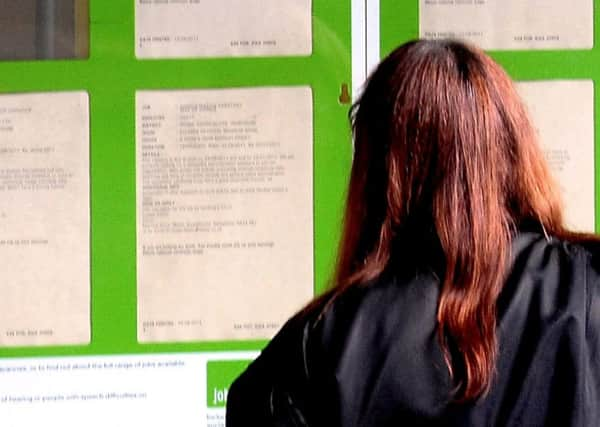Unemployment figures in province at lowest in a decade


The figure for September to November was 3.8% down by 0.9 percentage points from the previous quarter and by 1.8 percentage points over the year and lower than the UK as a whole and the Irish Republic.
However, there is increasing alarm at the rising level of economic inactivity across the province which is now the highest of all 12 UK regions. The term is used to describe people of working age who are neither in work or looking for a job.
Advertisement
Hide AdAdvertisement
Hide Ad“The local economic inactivity rate, having hit a record low in the summer of 2016, has been moving in the opposite direction,” said Ulster Bank Northern Ireland economist Richard Ramsey.
“Economic inactivity is affecting some age-groups more than others. For example, the proportion of 18-24 year olds not in or looking for work is significantly higher now than in 2017.”
At the same time he said other age groups were generally posting lower economic inactivity rates relative to a decade ago.
“While part of the rise in 18-24 year old economic inactivity will be due to a rise in student numbers, it is clear that economic inactivity and lack of skills / employment opportunities for this cohort is a serious problem.”
Advertisement
Hide AdAdvertisement
Hide AdRoger Pollen, the FSB’s head of external affairs welcomed the fall in the jobless total but described the employment landscape as “complicated”.
“The SME sector in Northern Ireland employs more people than all large businesses and the entire public sector combined, so it is important that all possible measures are taken to bolster confidence within this sector and ensure that more jobs are created and sustained.
Danske Bank chief economist Conor Lambe said the rise in employment was encouraging.
“Looking forward, we think that the economy will add more jobs in the year ahead.
Advertisement
Hide AdAdvertisement
Hide Ad“We also expect the average unemployment rate in 2017 to be around 4.7 per cent and to fall to 4.1 per cent in 2018, both significantly lower than the 5.8 per cent observed in 2016. However, the recent increases in eland’s economic inactivity rate means that this expected fall in the annual unemployment rate is not as positive as it might have first appeared.”